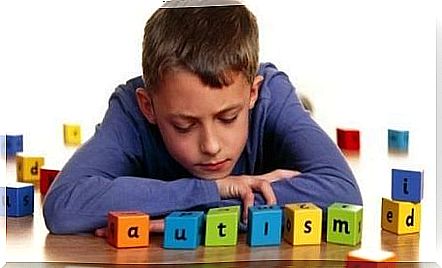“I’m Not Naughty, I Have Autism”: A Video Told In The First Person

It is a video that seeks to generate awareness in the population about the difficulties and problems that people with this disorder face every day. How people with autism feel and live is the idea of the people who thought of this release.
A Lesson About Autism That Will Open Your Eyes
This short film, which premiered on World Autism Awareness Day, aims to show society the sensory difficulties that children suffer from this disorder and how they affect their daily life.
During the minute and a half that this audiovisual production lasts, a child is shown entering a shopping center along with his mother. The thousands of sensations, odors and visions are present and intensify, distressing and disorienting the child.
As the child counts from one to ten trying to calm down, the lights and noise of the mall begin to overshadow everything. However, the child is no longer able to remain impassive in the face of so much stimulation of the senses and their disturbance, showing how unbearable is the situation that a simple walk imposes.
In addition to the video’s eminently subjective perspective, the voiceover also helps to make an impact and generate awareness about the condition that affects one in 68 children “ I’m not naughty, I have autism. I get a lot of information”.
What does a child with autism feel? This first person video is the answer.
The idea of this video, created by the English National Autism Society, is to improve, using messages like this one, the understanding of the sensory crises of this pathology. But without dramatizing, without sensationalism or protagonism. The intention is to get the message across clearly, with great quality and fidelity.

“Don’t judge me, just understand me” would be the message of this important one-and-a-half-minute production, capable of explaining a lot, and teaching even more, about what it’s like to experience in first person the reality that children with autism face in common situations.
Because, as we see, every noise – even the smallest of them – and any image turns into an inferno of visual and auditory stimuli that ends up becoming really exasperating and suffocating. This is the daily drama at school, at the park and at work.
If the sound “invasion” is a little unpleasant for us, the intense glare and the number of people in shopping places, imagine what it is like for someone with autism, who feels all these stimuli multiplied by a hundred? That’s why it’s important that we know about their problems and empathize with them.
This material also shows what hypersensitivity or hyposensitivity is, disorders very common among people with autism. Then, every stimulus is noticed much more intensely. And the worst is when they are uncomfortable and try to get out of this situation by their own means while the surroundings judge them for free.
What are ‘Autistic Spectrum Disorders’ (ASD)?
The so-called “Autistic Spectrum Disorders” are a condition in which the correct development of communication and language, social interaction and flexibility in conduct are altered – at different levels.
A recent study by the Autism Speaks Foundation found that the incidence of autism increases by around 17 percent each year. As a result, this health condition has become more common than Down Syndrome, Tuberculosis and childhood AIDS.
Parallel to this, the World Health Organization calculated in 2013 that approximately 70 million people in the world have autism. This same organ defined the condition as “a complex disorder in brain development”.
See below the video cited in this text, which shows – in general – what a person with autism feels. And share this article to build, with the help of as many people as possible, a more inclusive, understanding, empathetic and much less prejudiced world.







